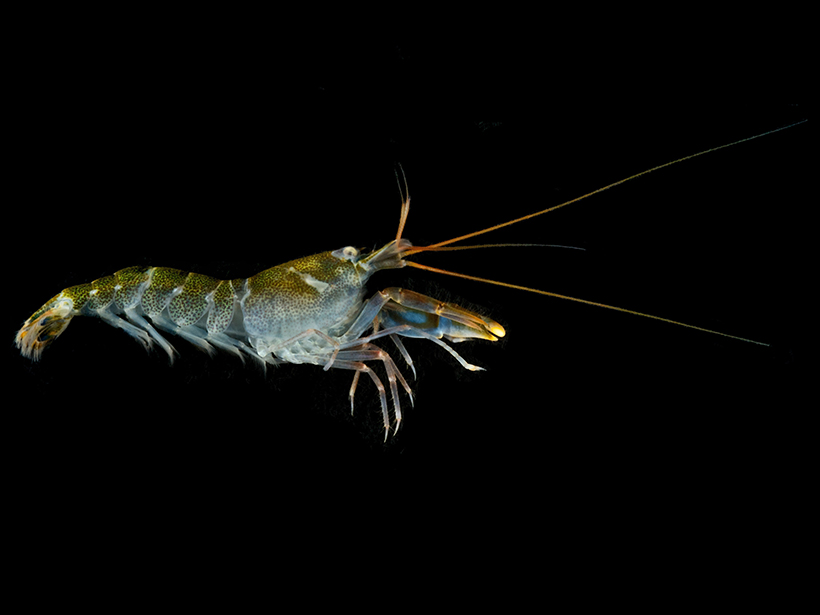These Women Unlocked the Mysteries of the Deep Sea. This engaging read showcases some of the women who took part in early deep-ocean explorations, in the 1930s. Think bathyspheres, Bermuda, and beautiful illustrations of exotic marine life.
—Timothy Oleson, Science Editor
How Big Oil and Big Soda Kept a Global Environmental Calamity a Secret for Decades. Rolling Stone takes a deep dive into how corporations positioned plastic to be a pervasive and inextricable part of our lives—and used creative PR to pin the blame on consumers.
—Heather Goss, Editor in Chief
Snapping Shrimp Pump Up the Volume in Warmer Water.

Who doesn’t enjoy a great headline and photo?! “Pump up the volume” with snapping shrimp!
—Melissa Tribur, Production Specialist
Europe’s Major Telescopes ‘Can Meet Satellite Challenge.’
So, the Hainaut/Williams paper looking at the impact of mega-constellations on @ESO telescopes is finally out. It’s a calm, numbers-based look at what the new wave of satellites could really mean for observing on Europe’s flagship telescopes. https://t.co/mxH6PNWAI3
— Jonathan Amos (@BBCAmos) March 5, 2020
Satellite megaconstellations like Starlink have started crisscrossing the sky. Thousands more satellites will soon follow. Many astronomers who rely on ground-based telescopes immediately decried the launches for making their science impossible. Elon Musk and others have defended the constellations, saying that they will have minimal impact on observations of the sky. More worrisome is the possibility that billions of dollars and euros will have been wasted on the next generation of large telescopes—the European Extremely Large Telescope (ELT) and the Vera C. Rubin Observatory, for example—which might not be able to meet their science goals. As with most things in life, the real answer is a little bit of good news and a little bit of bad news. A long-awaited paper looks at the numbers to assess the impact of satellite constellations on Europe’s current and future large telescopes. BBC’s Jonathan Amos breaks down the major points.
—Kimberly Cartier, Staff Writer

Yes, it’s a commercial. Yes, it’s 12 years old. But it’s making the rounds again, and for good reason.
—Caryl-Sue, Managing Editor
Citation:
(2020), This week: Exploring the deep blue sea and the starry sky, Eos, 101, https://doi.org/10.1029/2020EO141454. Published on 13 March 2020.
Text © 2020. AGU. CC BY-NC-ND 3.0
Except where otherwise noted, images are subject to copyright. Any reuse without express permission from the copyright owner is prohibited.

